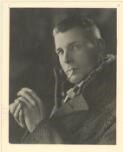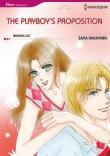AustLit
-
Adaptation has played an important role in Australian cultural history: from the early adaptation of Australian and overseas texts into first dramas, then silent films and radio plays to the modern-day adaptation, both locally and internationally, of Australian-produced television, films, literary works, and emerging media such as graphic novels and video-games.
This exhibition serves to highlight some key moments and events related to adaptation as it affects Australian writing.
It is not a comprehensive listing of every adaptation in the AustLit database.
The exhibition showcases some of the broader categories of adaptation related to Australia and Australians: the use of adaptation in the early film industry; the adaptation of Australian works across the globe; the Australian writers who made their livings, at least partly, through adapting other works; adaptations on television; and some of the most frequently adapted Australian works. It also takes a subset of AustLit's records on adaptation for an exercise in data visualisation.
The original iteration of this exhibition was compiled in 2014 by Dr Catriona Mills, supported by the ARC-funded Discovery Project, DP130101455 ‘Media Transformation in its Australian and International Contexts: Analysis and Theory-building’ by Professor Tom O'Regan. It was updated in 2020 by Dr Arti Singh as part of a WRIT7040 internship, under the guidance of both Professor Tom O'Regan and Dr Catriona Mills.
-
This interactive bar graph below shows the total number of works that are listed as being adaptations (blue bars) or having adaptations (red bars), based on AustLit's records as at July 2020.
The data is organised by decade, with each bar showing the number of works during a ten year period as indicated.
Hover your cursor over the bars or the legend to explore the data further.
-
-
This exhibition is not a comprehensive listing of every adaptation in the AustLit database.
What this exhibition does is showcase some of the broader categories of adaptation as it affects Australian writing: the role of adaptation in the early film industry; the adaptation of Australian works internationally; the Australian writers who made their livings, at least partly, through adapting other works; adaptations on television; and some of the most frequently adapted Australian works.
To explore adaptations in the database outside this exhibition, below are some handy links to searches designed around pre-determined parameters (links open in new window).
All adaptations in AustLit. Only adaptations produced in Australia (no international productions). All film and television adaptations in AustLit. Only film and television productions made in Australia (no international productions). Films, telemovies, television plays (adaptations only). Film series and television series (adaptations only). Stage plays (adaptations only). Radio plays (adaptations only). -
1900-1929: The era of the silent film
Following the success of the world's first feature-length narrative film, the 1906 Australian-produced The Story of the Kelly Gang, Australian film-makers were constantly seeking source material from which to satisfy increasing demand.
Charles MacMahon's 1907 Robbery Under Arms is the first film adaptation of Rolf Boldrewood's 1886 much-adapted novel Robbery Under Arms : A Story of Life and Adventure in the Bush and in the Goldfields of Australia.
-
1930-1939: Radio plays and the ABC
The 1930s saw the Australian Broadcasting Corporation (ABC) invest heavily in radio plays, many in collaboration with Max Afford (pictured). These include The Flail of God (1932), which was the first Australian-written drama broadcast on ABC radio and is based on Afford's 1931 stage drama of the same name, and the 1937 series The Father Brown Stories, which consisted of 15 individual radio plays adapted by Afford from G. K. Chesterton's short story series.
-
1940-1949: Escapism in the times of war
The years during and after World War II saw adaptations in genres such as crime, mystery, humour, and science fiction. These include Vol Molesworth's 1942 science fiction novels Ape of God and Monster at Large, both adapted from Mary Shelley's 1818 novel Frankenstein; or, The Modern Prometheus.
This decade also saw several adaptations of Alec Coppel's 1938 crime drama I Killed the Count : A Play In Three Acts, into radio plays for the ABC and British Broadcasting Corporation (BBC) and into a film for the BBC by Coppel himself.
-
1950-1959: Australians writers working prolifically overseas
Many Australian writers moved to the UK or the USA in the 1940s, leading them to rewarding careers that involved prolific adaptation of texts for British or American film, television, and radio. These writers include Rex Rienits, who adapted texts into films, television plays, and radio plays for the BBC in the 1950s, and Sumner Locke Elliott (pictured), who adapted many novels into television plays for CBS during this decade.
Elliott's 1955 Peter Pan, adapted from J. M. Barrie's 1904 drama, received both critical acclaim and the highest ratings for a single television program in television history to that point in time.
-
1960-1979: Australian television flourishes
Following the introduction of television in Australia in 1956, adaptation of texts into television programs flourished in the 1960s and 1970s.
In 1969, Tony Morphett adapted his 1967 novel Dynasty into an award-winning television play for the ABC, also named Dynasty, which was awarded the 1970 Penguin Award for Best Television Script by the Television Society of Australia. Morphett again adapted the novel for the ABC in 1970, this time into an award-winning series. The serial Dynasty won the 1971 Logie Award for Best New Australian Drama.
-
1980-1989: The era of the mini-series
Following the advent of colour television in 1975, the 1980s was the era of the mini-series in Australia: big budget, extravagantly costumed productions that often drew on Australia's colonial past.
One of several adaptations of Marcus Clarke's novel His Natural Life, For the Term of his Natural Life (1983; scene pictured) was the most expensive mini-series so far produced for Australian television at a cost of $5.6 million. It was comparatively well received in Australia and was distributed overseas.
-
1990-1999: Film and television draws heavily on recognisable literary properties
The 1990s saw film and television draw heavily for material from highly regarded and recognisable texts and works by well-known authors.
A prime example of this is the multi-award-winning film Schindler's List (1993), which was adapted from Australian writer Thomas Keneally's the Booker Prize-winning historical fiction novel Schindler's Ark (1982). The film swept the major awards at the Oscars, winning seven categories, including Best Picture, Best Director, and Best Adapted Screenplay.
-
2000-2009: Dramas and musicals
The 2000s saw an upswing in the number of Australian-produced drama and musical theatre adaptations, which drew upon material from both written and performance works.
Some examples include The Mayne Inheritance: A Play (2004), which was adapted from the award-winning biography The Mayne Inheritance (1997, The University of Queensland Press), and the multi-award-winning Priscilla, Queen of the Desert, The Musical (2004), adapted from the 1994 Australian film The Adventures of Priscilla, Queen of the Desert.
-
2010-2019: Song lyrics and graphic novels
The 2010s saw a large increase overall in the number of adaptations listed in the AustLit database.
Alongside the large number of drama, film, and television adaptations this decade, there was also an upswing in the number of song lyrics adapted from other sources, such as John Schumann's setting of picture book 'Anzac Biscuits', and of graphic novel adaptations, including several Japanese manga novels such as The Playboy's Proposition (2010) and Ruthless Billionaire, Forbidden Baby (2018) that are based on Harlequin's Mills and Boon romance novels.
You might be interested in...














